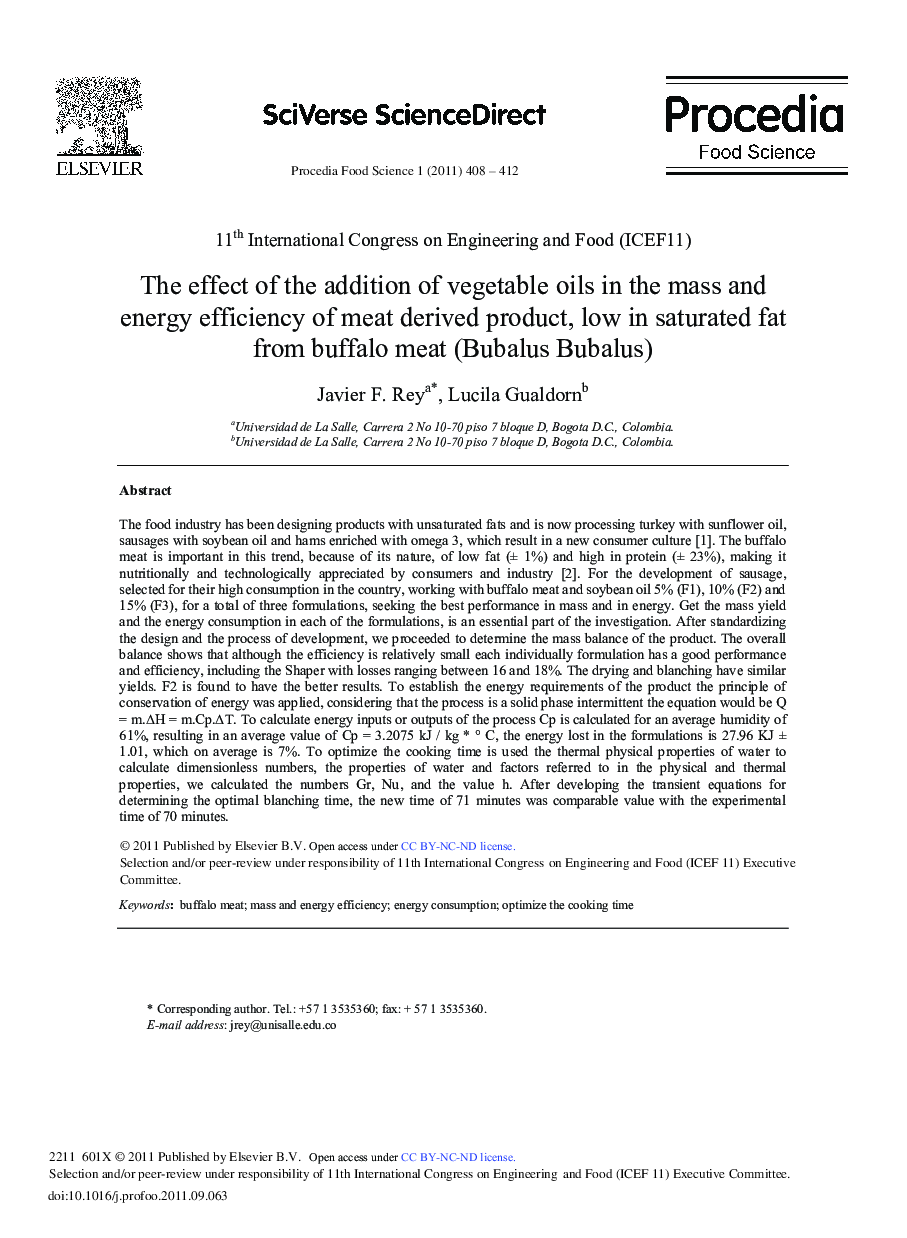| Article ID | Journal | Published Year | Pages | File Type |
|---|---|---|---|---|
| 1264971 | Procedia Food Science | 2011 | 5 Pages |
The food industry has been designing products with unsaturated fats and is now processing turkey with sunflower oil, sausages with soybean oil and hams enriched with omega 3, which result in a new consumer culture [1], . The buffalo meat is important in this trend, because of its nature, of low fat (± 1%) and high in protein (± 23%), making it nutritionally and technologically appreciated by consumers and industry [2]. For the development of sausage, selected for their high consumption in the country, working with buffalo meat and soybean oil 5% (F1), 10% (F2) and 15% (F3), for a total of three formulations, seeking the best performance in mass and in energy. Get the mass yield and the energy consumption in each of the formulations, is an essential part of the investigation. After standardizing the design and the process of development, we proceeded to determine the mass balance of the product. The overall balance shows that although the efficiency is relatively small each individually formulation has a good performance and efficiency, including the Shaper with losses ranging between 16 and 18%. The drying and blanching have similar yields. F2 is found to have the better results. To establish the energy requirements of the product the principle of conservation of energy was applied, considering that the process is a solid phase intermittent the equation would be Q = m.ΔH = m.Cp.ΔT. To calculate energy inputs or outputs of the process Cp is calculated for an average humidity of 61%, resulting in an average value of Cp = 3.2075 kJ / kg *° C, the energy lost in the formulations is 27.96 KJ ± 1.01, which on average is 7%. To optimize the cooking time is used the thermal physical properties of water to calculate dimensionless numbers, the properties of water and factors referred to in the physical and thermal properties, we calculated the numbers Gr, Nu, and the value h. After developing the transient equations for determining the optimal blanching time, the new time of 71 minutes was comparable value with the experimental time of 70 minutes.
